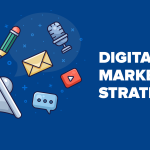The SEM (Search Engine Marketing) consists of placing ads paid search as Google to position your website quickly and effectively and achieve different objectives of digital marketing.
To achieve the best results it is necessary that our campaigns have a well-designed strategy. So we are going to see 5 essential steps to successfully organize your SEM strategy , that is, your search engine positioning campaigns.
5 Steps to Make your Search Engine Marketing strategy a success
Table of Contents
-
Define your goals
No marketing strategy makes sense if it is not tied to marketing objectives. Therefore, the first step should always be to define what we want to achieve through search engine ads.
Broadly speaking, Google Ads search campaigns can have three different objectives:
Sales: to drive sales and conversions (either online, in an app, by phone or in a physical store) or to attract customers who are about to make a purchase decision.
Sales opportunities (lead generation ): to encourage users of your target audience to subscribe to your mailing list or leave you their contact information.
Website traffic: to direct users of your target audience to your website.
Within these general objectives, we have to quantify and define our specific objective in order to assess whether we are on track to achieve it. For example, “generate 200 qualified leads through our Google Ads ads over the next 3 months.”
-
Research the market and keywords
In the vast majority of cases, you will have to compete to position yourself in the top positions of Google with other companies in your sector. Therefore, you must take into account which ones are already being advertised on Google and with which keywords.
You also need to analyze how your potential customers are looking for you. In general, we can identify three different types of keywords:
Short tail keywords: these are short, generic keywords, for example “SEM”. In general, they tend to have a lot of competition and high costs per click, but in return the search volume is very high.
Long tail keywords: they are much longer and more specific keywords. They generate a lower search volume, but in return they are easier to rank and are more likely to generate conversions.
Brand keywords: those that contain a specific brand or company name. Normally they correspond to a greater purchase intention on the part of the user.
-
Combine Search Engine Optimization and Search Engine Marketing
The SEO or organic search engine optimization, is the other side of the coin of the SEM. In this case, instead of paying to reach the top of the search engine, we focus on creating high-quality, well-optimized content for Google to include it in search results for free.
Ideally, SEM and SEO strategies go hand in hand, based on the keyword research we did in the previous step. For example, we can focus on SEM for long-tail terms with high purchase intention and go for SEO for broader and more informative searches.
As you see the results of your SEM campaigns, you can use these results to feed your SEO strategy, as they will give you an idea of the terms and offers that are most interesting for your target audience.
- Structure your campaigns correctly
The SEM strategies are structured in different levels , and one of the most common mistakes is not having clear which corresponds to each level.
To avoid starting the house with the roof, keep these guidelines in mind:
Account: all SEM campaigns must have an account associated with them. The most common is that it is a Google Ads account. A Google Ads account is associated with a unique email address, password, and billing information.
Campaign: Each SEM account can host one or more campaigns. Each campaign has a specific target audience associated with it. There are several important aspects that are configured at the campaign level: the network in which your ads appear (search, display or other combinations), the maximum daily budget, the start and end dates of the campaign, the location, the language, devices, bid strategy, ad extensions, and advanced settings (dynamic search ads, schedule, rotation, etc.).
Ad group: each SEM campaign is subdivided into ad groups organized by theme. Each ad group includes different ad creatives that share the same keywords. In addition, here we also decide the maximum CPC that we want to pay for each click.
Ads: The last level of the structure is the different ads or creatives that the final ad sees. In addition to text-only ads in search engines, they can also include elements such as images, video, interactive or product sheets.
- Monitor the quality level
The Quality Score or quality level is probably the most important metric within a SEM strategy. This is a score from 1 to 10 with which Google evaluates the quality of your ad. The higher it is, the better the ads will rank and the lower the cost per click.
The quality level is calculated from three elements:
The relevance of the ad , that is, the relationship between the ad and the keywords. To maximize your score in this section, I recommend that you specify your ad groups as much as possible.
The expected clickthrough rate, that is, the probability that a user will click on your ad after seeing it in their results. To improve it, you have to create attractive ads that clearly explain the benefits of your offer.
The landing page experience, or put another way, the quality of the page that users who click on your ad are directed to. To get more points, you will have to create well-structured landing pages, with fast loading times and adapted to different devices.

